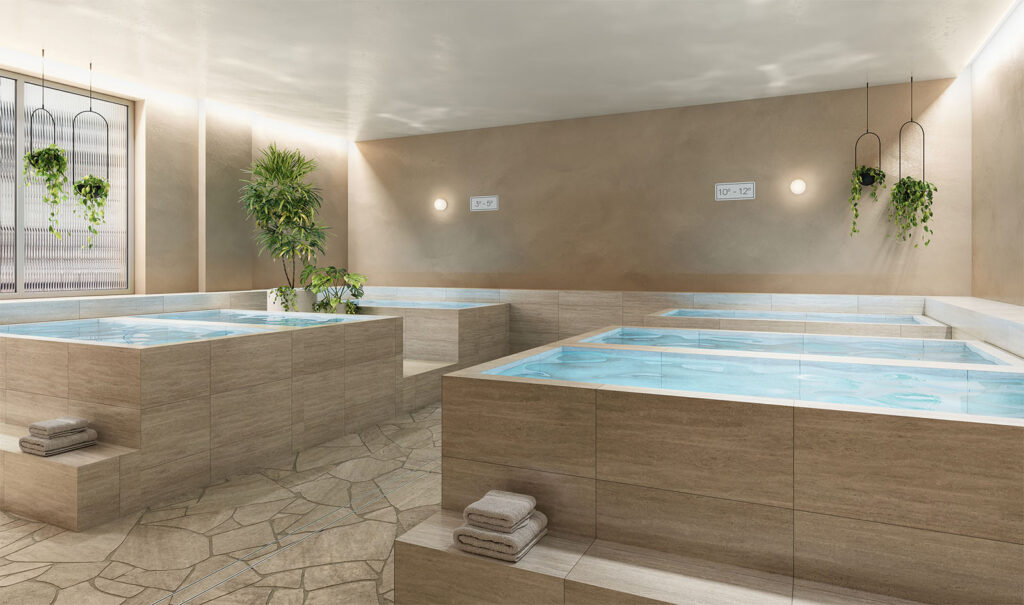Become an expert at cold plunge therapy by learning how cold water immersion affects your body’s organs, hormones and more. There’s more to ice bath benefits than just forcing yourself into chilling water for a shock, so take note of our advice below on the efforts you should make before, during and after the cold plunge – to enhance your overall cold therapy experience.
How to Optimise the Cold Plunge Routine
Before you take the plunge, start with some deep breaths. This technique can help lower your heart rate and prepare your body for the shock [1]. It’s like giving your body a heads-up before the big chill!
As you immerse yourself in the water, your body goes through a few distinct phases:
- 0-30 Seconds: The initial cold shock response kicks in, triggering rapid breathing and increased heart rate [2]. The dramatic cold exposure will be a bit of a rush, and you may not be comfortable, but it gets better – hang in there.
- 1-2 Minutes: Your body starts playing defence. Peripheral vasoconstriction occurs, redirecting blood flow to your vital organs [3]. It’s your body saying, let’s keep the important bits warm!
- 2-3 Minutes: Now you’re adapting to cold therapy like a champ! Your body may even start activating brown fat to generate heat [4].
After your plunge, resist the urge to jump straight into a hot shower. Let your body warm up naturally – it’s all part of the process.
This natural rewarming enhances circulation and triggers the release of norepinephrine, a hormone that can boost your mood and alertness
[5].
Post-plunge, try some light exercise to get your blood flowing. And remember to stay hydrated – cold exposure can increase diuresis (a fancy word for making you need the loo more often) [6].
Now that you know the technique, commit yourself to regular cold exposure. Frequent cold plunges improve immune function, reduce inflammation, and even enhance mental health [7].
So what are you waiting for? Dive in, embrace the chill, and enjoy the buzz. Your body (and mind) will thank you for it!
Memberships to XtraClubs available to purchase here.
References
References:
[1] Gooden, B. A. (1994). Mechanism of the human diving response. Integrative
Physiological and Behavioral Science, 29(1), 6-16.
[2] Tipton, M. J. (1989). The initial responses to cold-water immersion in man. Clinical
Science, 77(6), 581-588.
[3] Johnson, D. G., et al. (1977). Plasma norepinephrine responses of man in cold water.
Journal of Applied Physiology, 43(2), 216-220.
[4] Ouellet, V., et al. (2012). Brown adipose tissue oxidative metabolism contributes to
energy expenditure during acute cold exposure in humans. The Journal of Clinical
Investigation, 122(2), 545-552.
[5] Shevchuk, N. A. (2008). Adapted cold shower as a potential treatment for depression.
Medical Hypotheses, 70(5), 995-1001.
[6] Šrámek, P., et al. (2000). Human physiological responses to immersion into water of
different temperatures. European Journal of Applied Physiology, 81(5), 436-442.
[7] Buijze, G. A., et al. (2016). The Effect of Cold Showering on Health and Work: A
Randomised Controlled Trial. PloS one, 11(9), e0161749.




